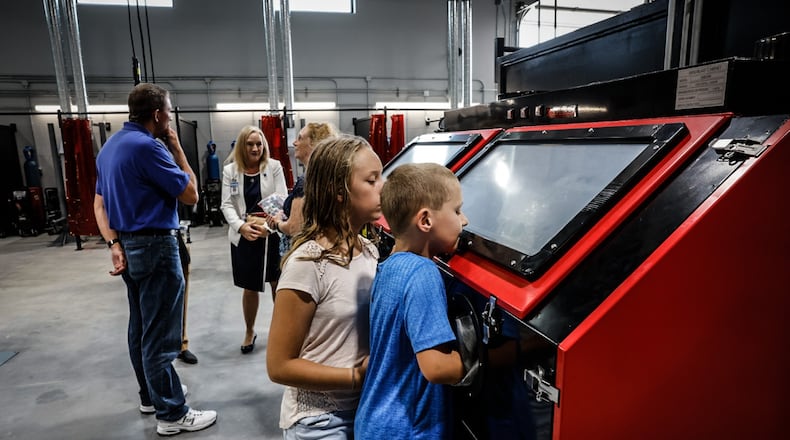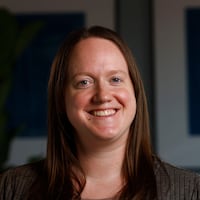ESSER funds may be used to purchase real property and perform construction for improvements to land, buildings, or equipment that meet the overall purpose of ESSER, which is “to prevent, prepare for, and respond to” the COVID-19 pandemic.
HHCS’s new career tech center will offer programming in the HVAC, welding and construction trades. The programming will be staffed, managed, and funded by the MVCTC, according to Superintendent Jason Enix.
“These programs are an expansion of our already existing partnership (with MVCTC) and we are grateful for their collaboration and expertise in providing career tech programming for our students, both at their facility and at Wayne High School,” Enix said.
MVCTC Superintendent Nick Weldy said Thursday the new career technology facility is a testament to the importance of technical training for students.
“I’m hopeful that this is going to produce at least a small dent in the number of skilled trades (workers) that we need. Skilled trades are not dead ... this is a rebirth,” Weldy said. “The young men and women that you see who are going to be inside this facility is our next generation of tradesmen and women who are going to take this country to a different level.”
In 2021, the school district selected Ruetschle Architects to create preliminary designs for the proposed tech expansion project, which ultimately included the renovation of and addition to a building on the Wayne High School campus.
Plans originally included the addition of 1,100-square-foot makerspace labs — collaborative student work spaces for designing, exploring, making, learning and sharing — as permanent additions in all elementary schools within the district.
However, the district decided to nix the makerspace additions after estimated project expenses soared nearly $3 million over its initial $7.1 million budget. School officials attributed this sharp rise to supply chain issues and rising construction costs, much of which was a lasting effect of the COVID-19 pandemic and its strain on the global and national economy.
But even after the makerspace labs were cut from the plans, the overall budget was still increased to around $8.5 million, a financial limit that the project was ultimately able to remain within, Enix said.
Huber Heights City Council gave final approval for the project to move forward in July 2022, and a groundbreaking ceremony was held in September of that year.
The 11,623-square-foot addition was constructed at the rear of the auditorium in an area that was formerly used as parking, resulting in a loss of 26 parking spaces. A canopy walkway was also constructed to connect the main high school and auditorium facilities.
According to Enix, around 20 students can enroll in each program, depending on demand. Enix said entering into this school year, each program is at or near capacity at this point.
“There’s still some wiggle room with that,” Enix said, adding that the max per program is about 25. “(Wayne High School Principal Brent Carey) made a comment earlier that once kids who aren’t in the program see this, we’re going to have a hard time keeping spots open.”
Mayor Jeff Gore said Thursday that the CTC programming will offer another option for students who may not want to attend college, but who want to find a successful career path that works for them.
“Not every student wants to go to college,” Gore said. “And I think that as a country and as a state, we’ve failed those kids and let them fall behind because we haven’t offered them that education option [...] I think this is well past due.”
Gore said the center is also a great asset for the city of Huber Heights as a whole.
“There’s something special about Huber Heights and anything that we can do to keep our residents and students here is a great thing,” he said. “Because that’s really what makes a community — people who are invested in that community.”
Weldy said earlier this year the MVCTC was previously turning away around 350 to 500 students each year simply due to a lack of space to meet the demand. This prompted MVCTC to add 10 new programs at its main campus in Clayton and its 19 satellite programs for the school year ahead.
About the Author

